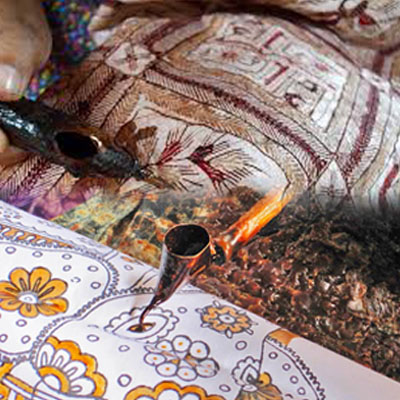BATIK

Sri Lankan Batik Industry
Sri Lanka, an island that is not just surrounded by its sunny sandy beaches’ but one that is enriched with its unique heritage, industries, and cultures. And among these, one of the most known and sought out industries in the world is the Sri Lankan batik industry. Its a combination of color layers spread on blank white fabrics by hand to create some of the most amazing eye-catching artworks for you.
-History of batik-
While cherishing the batik industry for many years by Sri Lankans, it is known that the rich batik culture that still alive in Sri Lanka was brought down by the Dutch. Most of the people state that it had been existing in the island for even much longer. Spanning from a wide array of designs consisting of traditional events, scenarios, flower and animal designs, raise by natural dye made from bark, turmeric, flowers and tea leaves were used in the past.
-Process-
Batik is the process of carefully applying wax on fabrics and adding dye to one section while avoiding the dyeing on the waxed section. This is repeated multiple times for the use of multiple colors. There are several ways for the application of the wax onto the fabric to be done. The fabric material that is often used for batik dyeing is cotton but occasionally pure silk is also used. There are several tools used to drip or apply the wax on the fabric to make traditional designs. A spouted tool called “canting” is used to drip the wax in pattern or design, and a stiff brush is used to apply the wax on larger areas or patterns.
After the process of embedding the wax designs onto the fabric is done, the material is then soaked in dye and thereafter the wax is removed with boiling water.
-Some of the main uses and items of batik-
Now some of you might wonder what would be the purpose of this delicate yet mildly expensive works of art on fabrics. It is mainly used to make clothes such as sarees, sarongs, shirts and all kinds of summer beachwear. To be able to own a rich and unique piece of heritage and to be able to wear it is what most seeking outsole effects would want.
But of course, there are many more uses of batik some of which are wall hangings, table cloths, ceiling artworks and so much more.
In some rare occasions the Sri Lankan batik industry has incorporated its many colorful designs with other industries as well. They would take the finished batik product and emboss it in furniture such as tables, chairs and doors. These beautiful works of art hung and displayed in many hotels most of which are sought out by many tourists visiting Sri Lanka.
These cultures, industries and bright colors are what keeps the pearl of the Indian Ocean occupied with many visitors from many countries all years long.

